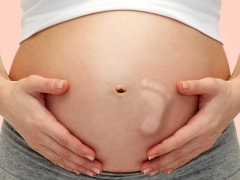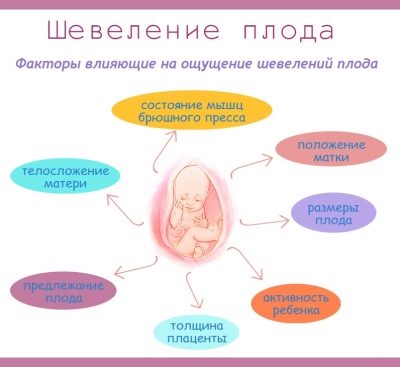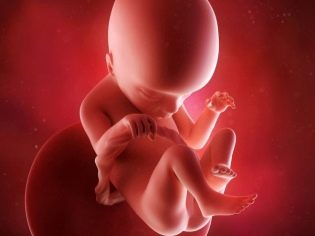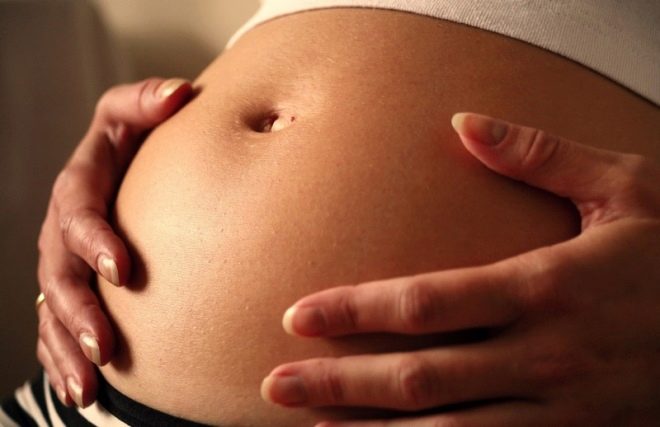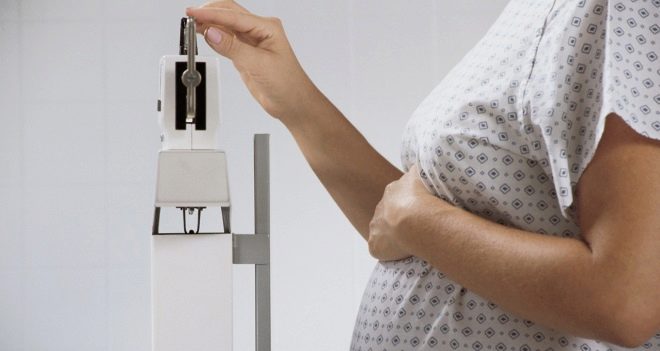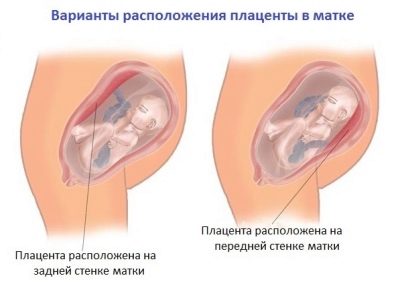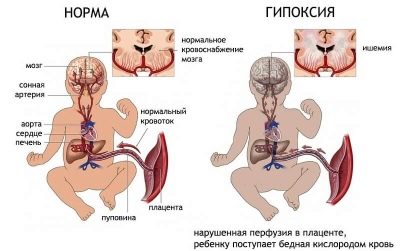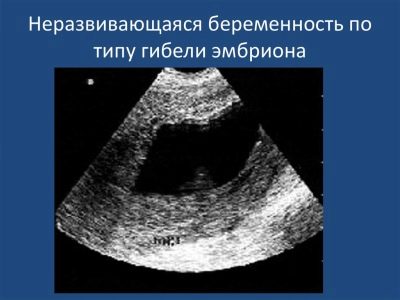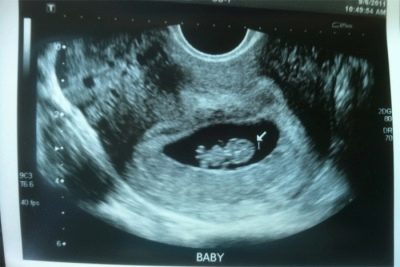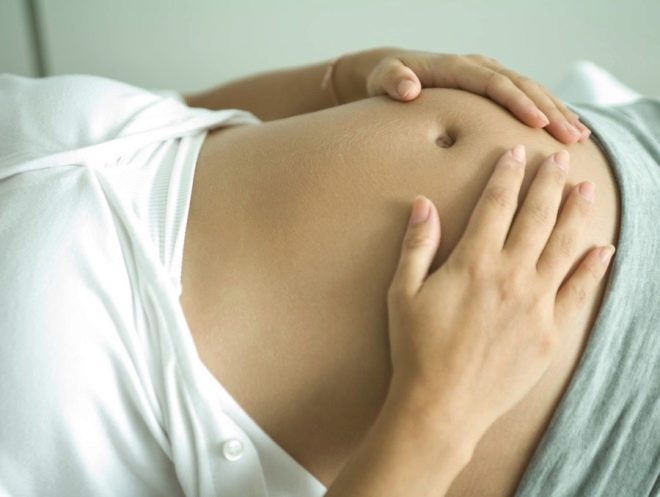The first movements of the fetus during pregnancy
Pregnant women wait for the first movements of the baby with special excitement and trembling. These feelings bring joy, because they strengthen the connection between the future mother and her child, allow her to "communicate" with the crumb and guess about his health. The question of the timing of the first movements - the most common among pregnant women. When to expect these magical sensations during the first pregnancy or during the second one, on which they depend and what they say, we will tell in this material.
Fetal movements
The baby in the womb begins to move early. If on 5-6 week pregnancy during the passage of ultrasound diagnostics, it is possible to first fix the baby’s heartbeat, 7-8 week the child begins to move, but so far only an attentive ultrasound specialist can notice these movements. The future mother cannot feel them, because her baby is still very small, his height is only 15-16 mm, and his weight is about 1 gram.
The movements themselves have the character of involuntary nerve impulses. Although they can be called nervous only with a very big stretch. It is a matter of the rhythmic contractility of the nerve fibers, which is present even before the nervous system is formed.
By week 10-11 During pregnancy, the fetus may move more actively by swimming in the amniotic fluid, which is filled with the bladder. From time to time the crumb touches the walls of the uterus, but the small height and weight predetermine the lightness and a certain weightlessness of these touches, a woman may not feel them.
By 16 weeks pregnancy movements of arms, legs, and also flexion and extension become much more conscious. The baby perceives sounds as vibrations. The amplification of vibrations of sound waves causes a change in motor activity, the baby's heartbeat quickens.
By the 18th week Pregnant baby begins to entertain itself, as far as the environment allows it - it swallows amniotic fluid, spits, pisses, plays with the umbilical cord, turns over in water, pushes away with legs and arms from the uterine wall, if it accidentally touches them.
No need to think that the baby is moving only because he has nothing more to do. The movements perform an important mission in brain development. They contribute to the development of reflexes, the formation of motor reactions to stimuli. Due to this, muscular-neural connections are formed.
The crumb is constantly increasing in height and gaining weight, and therefore at a certain moment his intrauterine “entertainment” becomes obvious and perfectly distinguishable to a pregnant woman. These are the first distinguishable movements. They are recorded on average between 16 and 24 weeks of gestation. Such a large time range is due to individual conditions.
First pregnancy
Women who are pregnant with their first child usually begin to feel their child later than those who carry a second or third child. First of all, this is due to the fact that the woman does not know the feeling of fetal movements; this has not happened to her before, and therefore they are often confused with the first light movements of the crumbs with other processes in her body, mainly with intestinal motility, intestinal gases.
The fact that women "in position" often "grumbles" in the stomach, we all know, because progesterone has a relaxing effect on the intestines. That is why the first light touches of the baby from the inside are not perceived as such, everything is “written off” to the intestines. In primigrains, the first movements are usually felt for a period of 18-22 weeks. Most often - at 20 weeks.
Earlier, before the advent of ultrasound diagnostics, obstetricians checked the duration of pregnancy by the first movements. If the first moving woman had the first birth, it conditionally corresponded to the period of 20 weeks and exactly the same remained until the birth. Now, by moving, gestational period is not established.
It is most difficult to recognize the movements of the crumbs, if there is no experience of carrying and giving birth. It is difficult to describe them, because a lot depends on individual sensitivity. Most pregnant women claim that they are similar to the light gentle touches of the tail of an aquarium fish from the inside or the fluttering of a butterfly.
Rerun
Women, more experienced in issues of gestation and childbirth, having such experience, usually begin to feel the movement of the fetus earlier than primiparous. This is due to the fact that the walls of the uterus are more stretched, besides the sensations of the baby's movements are already familiar to the woman and it is almost impossible to confuse them with the fermentation of gases in the intestines.
With repeated pregnancy, the movements are usually felt by the expectant mother for a period of 16-18 weeks. Some say that they began to “hear” their baby at 14-15 weeks or even a little earlier. This is also possible, in this matter also a lot of individual factors play a role.
What do they depend on?
As already mentioned, the emergence of the first tangible perturbations depends on what kind of pregnancy. However, there are a number of factors that are exactly the same for primiparous and recurrent, on which it depends on how early it will be possible to feel the movements of the baby. Let's look at each of them.
Composition and weight
Slim women usually begin to feel their baby in the womb earlier than their full friends. The higher the body mass index before pregnancy, the harder it will be to feel the baby. The fact is that the walls of the uterus themselves do not have special sensitivity.
It is possible to feel touch to them when the impact itself from the inside is strong enough for the nerve endings of the peritoneum to “catch” them. If a woman has solid reserves of subcutaneous fat on the anterior abdominal wall, the impulses will be less visible to the central nervous system.
Kids in full and thin mothers begin to move at about the same time, only the build and sensitivity will allow women of different weight categories to sense movements at different times.
Fetal location
The sensitivity of the future mother affects the location of the placenta in the uterus. If it is located on the back wall (the most common option), then the movements are felt somewhat earlier. The location of the “children's place” on the front wall leads to the fact that the movements of the child are directed not towards the front abdominal wall of the mother, but towards the intestine. With this arrangement, the movements can become discernible and noticeable a little later.
No one can choose the location and influence it, it is determined at the earliest time when the embryo, which is no more than 8-10 days long, is lowered into the uterine cavity and attached to its endometrium. He can arbitrarily implant both in the front and in the back wall of the mother's reproductive organ.
Woman's activity
Since the first movements are very delicate and subtle, they are easy to miss. Usually this happens in women who during the day lead a mobile and active lifestyle. Working women, students simply do not have the physical ability to relax and feel the movement of the baby during the day. But in the evenings, when a woman lies down, relaxes, all sensations become more pronounced.
Quite often, women say that they felt their baby in the womb for the first time in the evening, when they were comfortably settled with a book to rest or at night, when they were ready to fall asleep. Women who are less active are more likely to feel fetal movements during the first or second pregnancy.
Fetal size and multiplicity
If the fetus has a tendency to size and the ultrasound doctor says that the size of the baby exceeds the standard average rates, it is possible that the movements will be felt a little earlier. In pregnancy, twins or triplets, babies movements also appear earlier.
Reasons for absence
The lack of distinguishable movements of the fetus in the womb should not frighten a woman if the deadlines set in obstetrics have not yet come out. In other words, during the first pregnancy, one should begin to worry about the absence of perturbations only after 23 weeks of gestation, and during repeated pregnancy - after 20-21 weeks.
Quite often, women who turned to an obstetrician-gynecologist with complaints about the absence of perturbations, leave the doctor’s office “illuminated,” because the doctor helps to analyze all the unusual sensations and concludes that there is perturbation, it’s just that they were left unidentified by the future mother.
When complaints about the absence of perturbations, an ultrasound examination is prescribed. It is the ultrasound that helps to identify the true causes of the lack of movement of the baby.
Why can the fetus not move? The reasons for the mass and all of them, alas, are not the most pleasant.
Hypoxia
Oxygen starvation can develop at any stage of pregnancy. The cause of it can be infectious diseases transferred by a woman, pathology of the placenta, bad habits, uncontrolled medication in the early stages, Rh-mother-fetus conflict (if the woman has a negative Rh factor).
In the early stages of oxygen deficiency, babies are activated, they move quickly and erratically. If the state of hypoxia is maintained for quite a long time, the fetus minimizes all movements to save oxygen, which requires more activity for it than it is in this situation.
If the initial stage of hypoxia was at an earlier period, at which it was not possible to feel the activity of the crumbs, or the woman did not pay attention, then by the time when there should be the first distinct movements, the child is already entering the stage of chronic hypoxia, at which he practically does not move. It is important to establish the cause that led to oxygen starvation as early as possible in order to eliminate it, otherwise the baby may die.
Fading Pregnancy
The baby can stop in its development at any stage of pregnancy up to 28 weeks. By the end of the first trimester, many pregnant women exhale with relief - the danger of miscarriage is over. But the danger of a non-developing pregnancy persists, although the likelihood of its development after 12 weeks is small.
A non-developing pregnancy is also called a failed miscarriage, because after the death of the fetus can remain for quite a long time in the uterine cavity. Sometimes it can take up to 3-4 weeks until the moment of rejection, which manifests itself as abnormal bleeding, severe pains of a cramping nature. It is clear that the dead baby will not move.
To exclude missed abortion, do ultrasound. If motor activity is not recorded on it, if there is no heartbeat, an appropriate diagnosis is made and a woman is hospitalized for curettage of the uterus, because an undeveloped pregnancy is a serious threat to the life and health of the woman herself.
Delayed fetal development
As we already know, the baby must reach sufficient size and weight so that his movements become palpable. If the baby has an intrauterine growth retardation, perturbations may appear much later than normal.
Usually this happens with significant IUGR, when the size of the fetus at 3-4 weeks is lagging behind the normative values.
Reasons for developmental delays must be identified in order to be able to eliminate them and give the kid an opportunity to “catch up” with the norms. Most often, the reasons lie in the mother's diseases - infectious, viral, genital infections. Kids can slow down in development because the mother is exposed to the harmful effects of nicotine, alcohol, narcotic drugs, toxins, nitrates, drugs, which she took without the consent of the doctor.
Sometimes the cause of the delay in development is unremovable: most chromosomal pathologies, severe and incurable syndromes in the fetus are accompanied by a significant lag in its growth rates. Sometimes, pathology of the placenta, malformations of the child, severe metabolic disorders in the mother's body act as the cause.
Motor activity of the baby
Only after 25 weeks of movement of the child become more regular. Now the expectant mother will be able to "communicate" with the child. By the 29th and 30th week, the baby will begin to respond with movements to some emotional situations - to her hand on her stomach, to strokes, to loud voices, shouting, door slamming, alarm clocks.
From week 28, a woman will be advised to keep a daily count of the number of episodes of the child's physical activity using one of the existing methods.
A decrease or increase in the rate of movement per day will become diagnostically important. Mom can understand if everything is fine with the child
The first movements are too irregular for them to be able to diagnose anything. You do not need to count them. Just a day, babies in the 20th week make up to 300 different movements, but the expectant mother will feel no more than 1-5% of this amount.
Until the 28th week, it is important to simply note the daily nature of the child's physical activity. If in one of the days the crumb moves more often, and in the other - less often, you should not panic. Kids are very sensitive to weather changes. In winter, babies can be more active than on a hot summer day. On a rainy day, they want to sleep no less than they are pregnant.
At night, fetal activity may be more pronounced than during daytime. If the mother is experiencing and is nervous, the baby can move less frequently, because stress hormones that are produced in the woman’s body also have an effect on him.
A joyful mother who receives positive emotions generously shares with her baby serotonin, the hormone of happiness. Receiving it with the blood of the mother, the child will move somewhat more actively.
Tips
The following tips will help you understand the sensations and recognize the first movements.
- Having an hour of free time, eat a piece of chocolate, drink a glass of warm milk and lie down in a state of rest, carefully listening to the sensations. Usually chocolate or any other sweetness makes babies more active.
- Do not be nervous, your baby is not obliged to anyone, he should not develop and grow in strict accordance with existing obstetric norms. If there is no movement, you need to relax. Stress and worries about their absence only exacerbate the situation.
- Talk with your baby. He cannot yet hear you in our usual understanding, but he feels great when he is approached with love and care.
More details about the movement of the fetus will tell Dr. E. M. Dzhobaeva in the next video.
